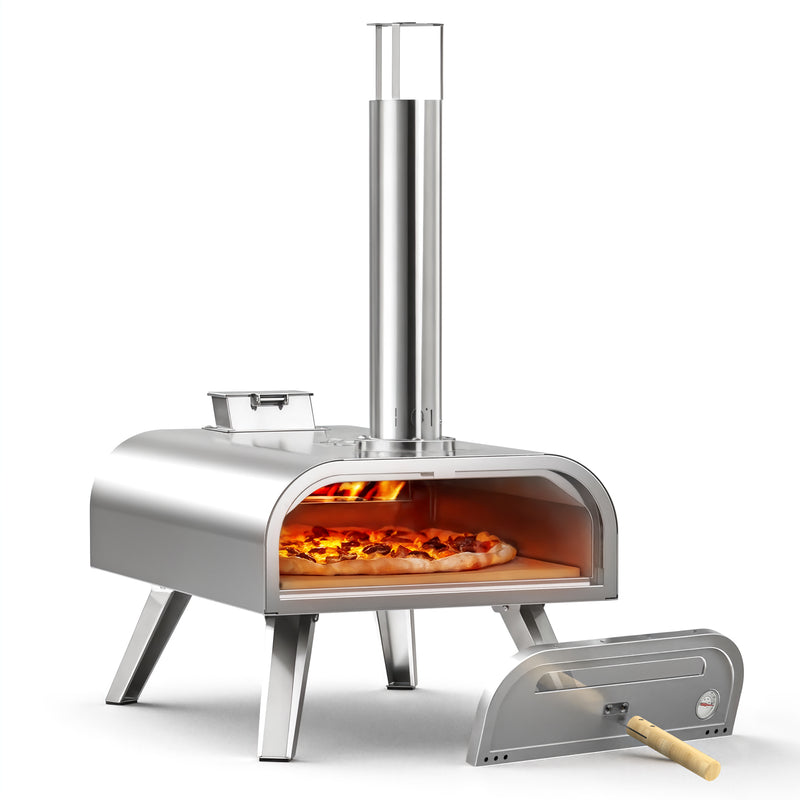Unlock the Secret to Perfectly Reviving Leftover Pizza in the Oven!
There's nothing quite like the joy of biting into a slice of pizza, whether it's fresh out of the oven or a leftover from last night’s feast. However, reheating pizza can often lead to a disappointing experience if done incorrectly. Many of us have tried various methods to warm up pizza, such as microwaving or using a skillet, but these approaches often fall short in preserving the beloved flavor and texture that makes pizza so special. Enter the oven, the unsung hero of pizza reheating! This method not only restores the crispiness of the crust but also revives the gooeyness of the cheese and the vibrancy of the toppings. In this guide, we’ll explore the best techniques to warm up pizza in the oven, ensuring that each reheated slice is as delightful as the original.

The Science Behind Reheating Pizza
When pizza cools, a lot happens that affects its overall appeal. As it sits, the crust can become chewy, the cheese may lose its creaminess, and the toppings can dry out, leading to a less than appetizing experience when you finally decide to dig in. The cooling process causes moisture to escape, resulting in a crust that lacks its former crunch and a pizza that feels flat. However, reheating pizza in the oven is a game-changer. The heat recirculates, allowing the moisture to return to the cheese and toppings while also re-crisping the crust. This method can transform cold, lifeless slices back into a pizza that tastes fresh and delicious. A friend of mine swears by this method and insists it's the only way to enjoy leftover pizza—she even claims it brings back memories of her favorite local pizzeria!
Preparing to Reheat Your Pizza
Before diving into the reheating process, there are a few preparations to consider to ensure the best outcome. Start by gathering the necessary materials: a baking sheet, aluminum foil, and, if you have one, a pizza stone. Preheating your oven is crucial; aim for a temperature of about 375°F to 400°F (190°C to 200°C). This temperature range is optimal for getting that crust crispy without burning the toppings. Additionally, think about the pizza you’re reheating. If it’s a single slice, it might not require the same time as a whole pie, so adjust your expectations accordingly. It’s also wise to let the pizza sit at room temperature for about 10 minutes before reheating to reduce the time it spends in the oven.
The Step-by-Step Process of Warming Up Pizza in the Oven
Now, let’s get into the nitty-gritty of reheating pizza in the oven. First, preheat your oven to 375°F to 400°F. While the oven is heating up, place your pizza on a baking sheet lined with aluminum foil or directly on a pizza stone if you have one. The foil can help catch any drips or cheese that may melt off, making cleanup a breeze. If you’re using a baking sheet, be sure to create an edge with the foil to keep everything contained. Once the oven reaches the desired temperature, slide your pizza in. For a single slice, set a timer for about 8 to 10 minutes; for a whole pizza, aim for 10 to 15 minutes. Keep an eye on it towards the end—every oven heats differently! You’ll know it’s ready when the cheese is bubbly and the crust is lightly browned. Carefully remove the pizza from the oven and let it cool for a minute before diving in.
Tips for Achieving the Best Results
To elevate your pizza reheating experience, consider these additional tips. If you have a pizza stone, use it! Preheating the stone in the oven can help achieve that perfect crust. Another trick is to add a few drops of water to a pan at the bottom of the oven to create steam, which will help keep the toppings moist. Additionally, covering the pizza with aluminum foil for the first half of the reheating process can trap heat and moisture, ensuring that the cheese melts nicely without overcooking the crust. Lastly, don’t be afraid to get creative—adding a sprinkle of fresh herbs or a dash of hot sauce right before serving can give your reheated pizza a fresh twist.
Common Mistakes to Avoid When Reheating Pizza
Even with the best intentions, there are common pitfalls that can lead to disappointing results when reheating pizza. One major mistake is cranking the oven temperature too high in an attempt to speed up the process. This can lead to burnt edges and cold centers—a no-win situation! Another common error is skipping the preheating step; throwing cold pizza into a cold oven can lead to uneven reheating. Additionally, many people forget to check on their pizza while it’s reheating, leading to overcooked or dried-out slices. Lastly, placing the pizza directly on the oven rack can cause toppings to fall off or create a mess; always use a baking sheet or stone for a more controlled reheating process.
Reviving Your Leftover Pizza
Reheating pizza in the oven is a tried-and-true method that can bring your leftovers back to life, preserving the delicious flavors and textures that make pizza a beloved meal. By understanding the science behind reheating, preparing properly, and following the step-by-step guide we’ve outlined, you can enjoy your leftover pizza as if it were freshly made. With a few extra tips and pitfalls to avoid, you’re well on your way to pizza perfection. So the next time you find yourself with leftover slices, skip the microwave and opt for the oven—your taste buds will thank you!








